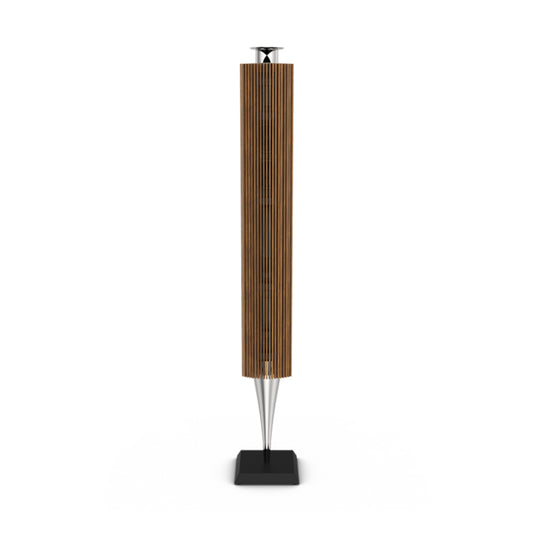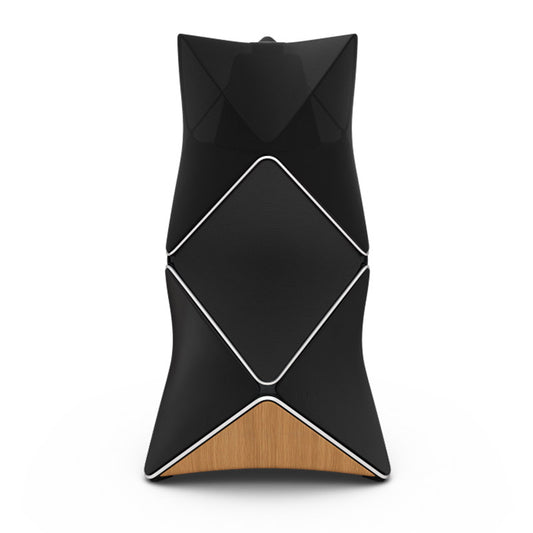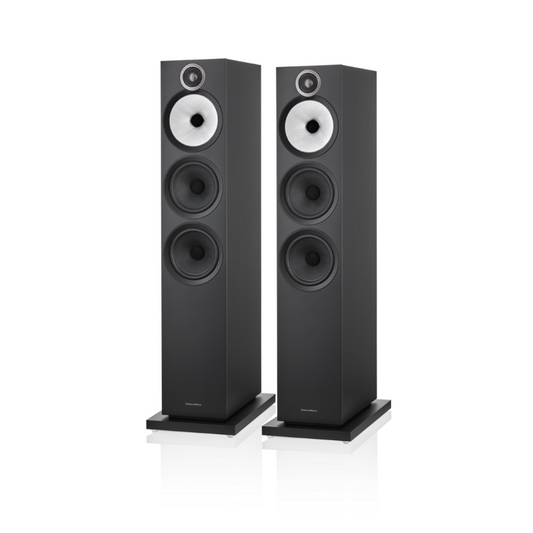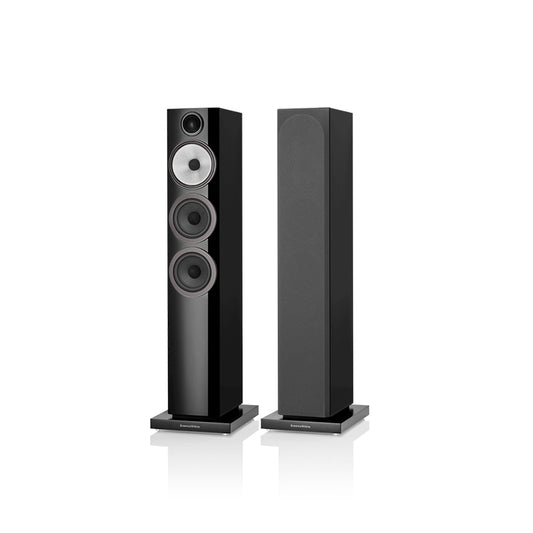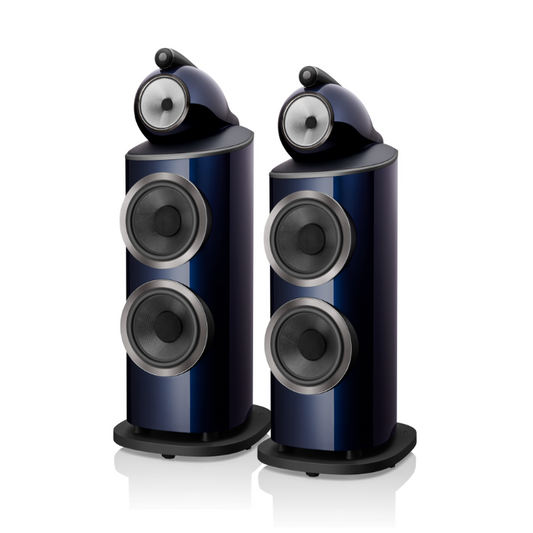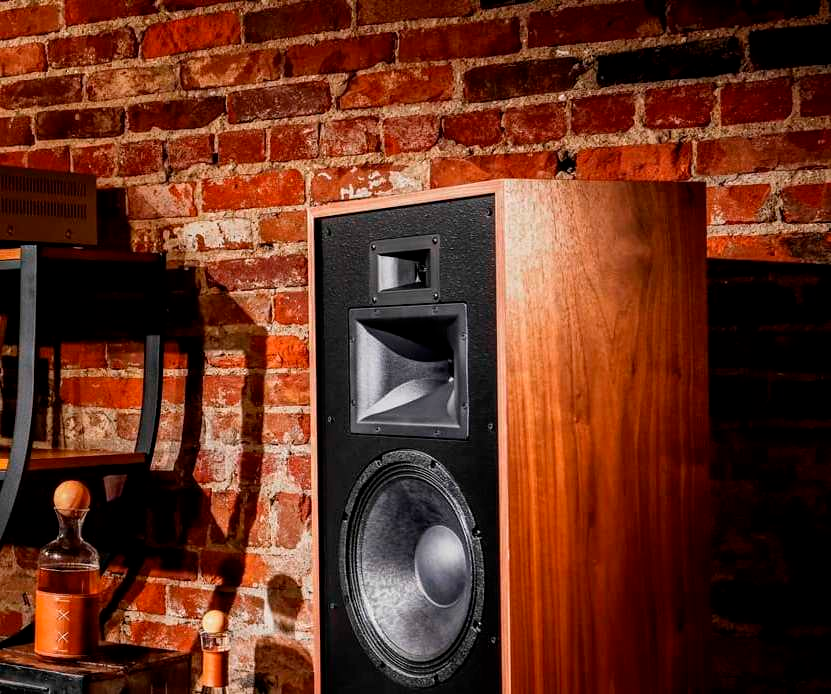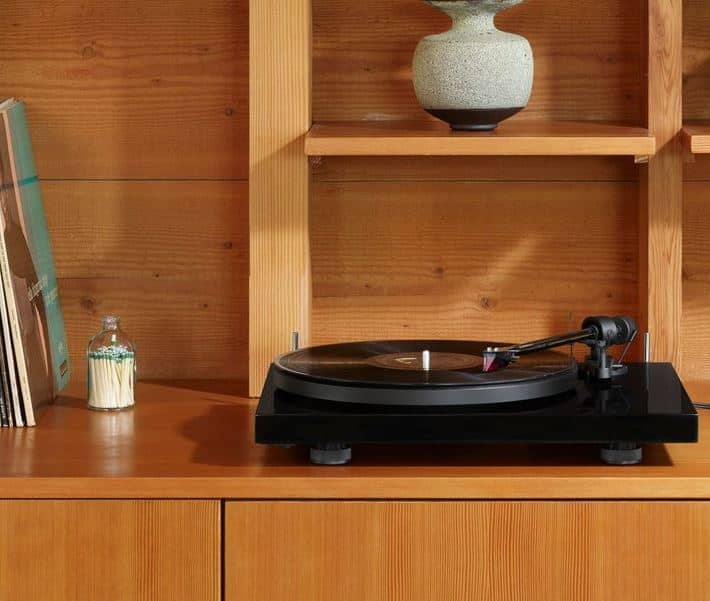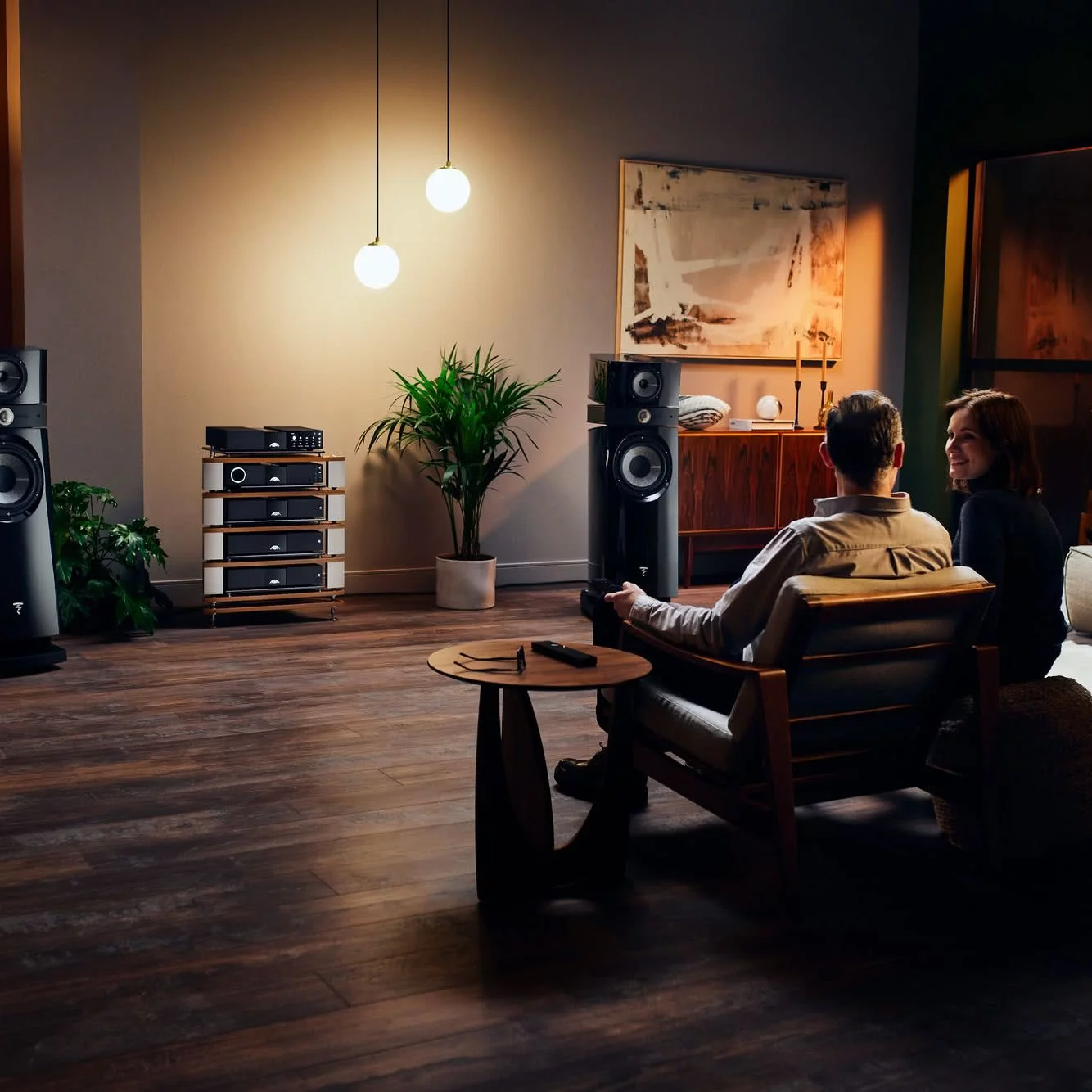The challenge to create audio perfection
To make the claim that you create the world's most accurate speaker, both technically and musically is bound to attract a few challenges. This is why Duntech has made available full documentation of the performance capabilities of its new Crown Prince using specifications from one of the world's best-equipped audio labs.
It is "Bottom Line Performance", not advertising hype, that counts. In providing full accurate documentation of the performance capabilities of the Duntech Crown Prince, we invite you to objectively assess its accuracy, in relation to other speakers.
If this information is not available to you on other speakers, maybe you should be asking why? We agree accurate measurements don't tell the full story, but they provide an extremely good starting point. A loudspeaker that does not measure well will never sound accurate when compared to the live musical experience. But, of course, Duntech does not just rely on technical measurements — the best judge is still the human ear. Our scientists and engineers spend a good deal of time comparing their creations with live voices and musical instruments, to savour the harmony that exists between theory and practice and between objective measurements and subjective listening. The important "Bottom Line" of all this is that the Duntech Crown Prince loudspeaker is capable of reproducing music with overall accuracy and musicality unparalled by any other known loudspeaker, regardless of cost, size, or country of manufacture.
Design excellence. Sound perfection.
The design of the Crown Prince is the culmination of extensive and costly technological research which Duntech began in 1972 to discover what properties of sound are used by humans to determine "realism": This research program discovered and verified the following facts:
The most important parameter for ensuring realism is, of course, a flat amplitude vs. frequency response. But it is important that this response be measured at a distance of 3 to 4 metres, on axis, in an anechoic environment, rather than the usual 1 metre. Almost as important is the ratio of the on-axis amplitude response to the total radiated power response. For a speaker to accurately mimic a live performance, its on-axis amplitude response must not vary more than +/– 2 dB over the audio spectrum. The 'totalpower-response" should show a slight rise at lower frequencies.
Flat phase vs. frequency is almost as important as flat amplitude vs. frequency. This requires that all drivers be "path-aligned" and that the cross-over network be of the minimum-phase type.
Angular dispersion, especially horizontally, must simulate (on average) that of most musical instruments and the human voice, if the reproduced sound is not to be heard as either dull or bright. In other words, perceived spectral balance is very much dependent upon angular dispersion (beamwidth), the smoothness of the off-axis response, and the symmetry of the radiation patterns.
Truly accurate reproduction requires that the loudspeaker exhibit "point-source" radiation, that is, sound at all frequencies must appear to emanate from a single point in space whose height above the floor is about equal to the height of the listener's ears.
A wide dynamic range, without audible distortion, is extremely important to the accurate reproduction of most musical instruments, especially brass and percussion types.
The response of a speaker to a "step-function" signal (analogous to a battery turned on by a switch), measured at a distance of 3 to 4 metres (normal listening distance), correlates very well with how realistic it sounds compared to live music.
Diffraction distortion, that is, distortion due to sound diffracted off enclosure edges, etc. , produces a very audible deterioration in the reproduction of musical transients.
The response of the loudspeaker to short pulses and tone-bursts should reveal little or no ringing, overshoot, or waveform distortion.
The walls of the speaker enclosure should be stiff and non-resonant. They should contribute no sound of their own if uncoloured reproduction is to be attained.
The quality of the inductors, capacitors, and resistors in the cross-over network and the type of wire used for interconnecting the drivers is important to achieving very low levels of distortion and the best possible definition of subtle musical transients.
Design that's technologically superior.
Integrating all of the foregoing criteria into a practical loudspeaker design was a demanding and often arduous technological task. But we feel the result was worth far more than the effort — a speaker that displays almost "textbook" performance. A level of performance which truly borders upon perfection and permits,
for the first time, the reproduction of music of such stunning realism that even experts have failed to differentiate between live and recorded instruments during demonstrations.
In appearance, the Duntech Crown Prince personifies true elegance, derived from clean, simple lines, beautiful proportions, and the use of only the best natural wood veneers, hand-rubbed to a faultless finish. Even the grill-cloth is an attractive, specially made, double-knit polyester jersey which is acoustically transparent at even the highest frequencies, where other materials begin to show undesirable characteristics. All these features are combined into a loudspeaker which is the ultimate in both acoustics and aesthetics.
Key Features
- VERY FLAT AMPLITUDE RESPONSE AND PHASE RESPONSE VERSUS FREQUENCY (Measured at a meaningful distance of 3.5 metres on the listening axis).
- ACCURATE TIME COLLIMATION OF DRIVERS (Equal path lengths oetween all drivers and listening position).
- MINIMUM-PHASE, FIRST-ORDER TYPE CROSSOVER NETWORK.
- HIGH-DEFINITION, PULSE-COHERENT DESIGN (Reproduces complex musical passages without loss of definition or shape-distortion of the original waveform).POINT-SOURCE RADIATION (speaker simulates a point-source in space).
- SYMMETRICAL RADIATION PATTERNS IN BOTH HORIZONTAL AND VERTICAL PLANES.
- WIDE HORIZONTAL DISPERSION WITH SMOOTH OFF-AXIS AMPLITUDE RESPONSE.
- WIDE DYNAMIC RANGE WITH VERY LOW NON-LINEAR DISTORTION.
- HIGH SENSITIVITY (90 dB at 1 metre for an input of 2.83 volts, RMS).
- HIGH POWER CAPABILITY (All drivers are rated for a peak power of 1 kW for 10 milliseconds, without waveform distortion or burnout).
- INAUDIBLE DIFFRACTION DISTORTION (Patented* design, using efficient acoustical absorbing material surrounding all drivers virtually eliminates distortion due to diffraction at edges of the enclosure).
- FLAT IMPEDANCE VERSUS FREQUENCY RESPONSE (Except at frequency of bass-resonance, impedance varies from 3 to 5 ohms over entire audio range).
- OPTIMALLY DAMPED BASS RESPONSE (Ensures a tight, smooth bass, free of any boxy or boomy quality).
- HIGH-QUALITY COMPONENTS THROUGHOUT (Only the highest quality drivers, Polypropylene capacitors, hi-Q air-core inductors, low distortion resistors, high purity measurement-quality wire, special high-density "custom-wood", selected hand-finished veneers, and special-made ultra-transparent grill-cloth are used in the Crown Prince to ensure flawless reproduction and trouble-free operation).
- 100% QUALITY CONTROL (A quality-control procedure patterned after MIL-SPEC requirements checks and re-checks every driver, crossover-component, enclosure, etc. before assembly. Each completed loudspeaker is then extensively tested for conformance to all specification limits under the watchful supervision of a competent engineer before shipment).
*U.S. Patent # 4,167,985, issued to John Dunlavy of Duntech on 18 Sept. 1979.
Specifications
ELECTRICAL (Measured at an ambient temperature of 23 deg. C.) Amplitude Variation vs Frequency:
40 Hz to 20 KHz, +/-2 dB (measured on axis at a distance of 3.5 metres).
Phase Variation vs Frequency:
Relative phase varies less than about +/-30 degrees from 100 Hz to 16 KHz. (Measured on axis at a distance of
3.5 metres).
Impedance:
Nominal 4 ohms (varies from a min. of 3.0 ohms to about 5.0 ohms, except for impedance at bass resonance which rises to approximately 7 ohms).
Efficiency:
90 dB SPL referenced to 1 metre on axis is achieved with an input voltage of 2.83 volts, RMS (1 watt at 8 ohms).
System Bass Resonance:
Approx. 42 Hz.
Low Frequency Q and Damping:
System is optimally damped (Q = approx. 0.85) and exhibits an "ideal" low-end roll-off of approx. 12 dB/octave below resonance. Bass drivers are in separate, sealed enclosures.
Pulse Coherency Factor:
All drivers are collimated to obtain a differential propagation time error (path-alignment) of less than about 10 uS at a distance of 3 to 4 metres along the geometric axis of the speaker.
Harmonic Distortion:
Less than 0.5% THD at frequencies above about 50 Hz for an SPL of 90 dB (re: lm, on axis). Max. THD is about 2% at 30 Hz for same conditions.
Diffraction Distortion:
Loss of fidelity due to sound energy diffracted from the edges of the enclosure is virtually eliminated by the use of efficient acoustical absorbing material surrounding the drivers.2
Cross-over Frequencies:
Approximately 500 Hz and 5 KHz.
Cross-over Design:
Minimum-phase type, using Polypropylene caps and Hi-Q, Air-core inductors.
Drivers:
Two (2) 240 mm dia. bass drivers; Two (2) 100 mm dia. mid-range drivers; and One (1) 28 mm dia. tweeter. Each driver is in a separate, sealed enclosure.
Power Rating:
All drivers are rated at 1 kW for 10 milliseconds.
Recommended Amplifier Power:
Approx. 100 Watts/channel minimum (for maximum enjoyment, an amplifier with a rating exceeding 250 watts,
RMS, continuous per channel is recommended).
MECHANICAL
Size:
1800 mm (71 in.) high; 305 mm (12 in.) wide; 435 mm (17 in.) deep.
Base is 470 mm (18.5 in.) wide by 600 mm (24 in.) deep at floor level.
Weight:
Approx. 55 kilos (121 lbs.), each.
Material:
Enclosure walls are approx. 18 mm (3/4 in.) thick, and are fabricated of laminated layers of high-density "custom-wood" in a manner designed to reduce resonances and vibration to a minimum. The inside surfaces of the woofer chambers are reinforced and braced to achieve further stiffness.





